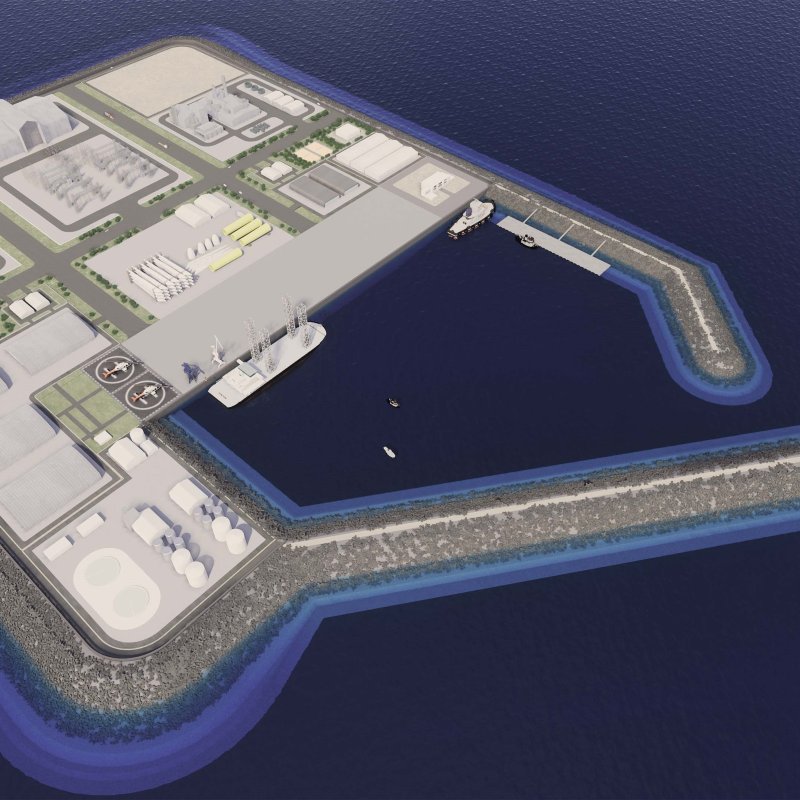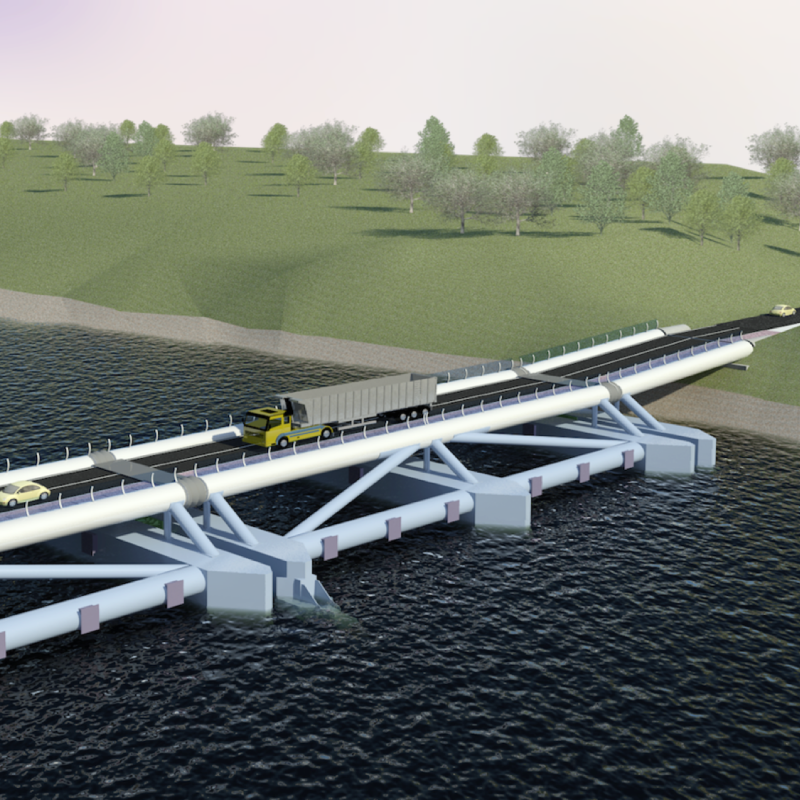Based on unique Dutch offshore and maritime expertise, several consortia have been working on developing concepts that incorporate marine energy technologies into existing or new civil structures. In this way, multiple-business cases can be created, which lead to sustainable and viable win-win situations. The consortia that are working on these concepts consist of multiple partners from different industries, including offshore, financial, and project management players.
Dutch Concepts

Delta21
Delta21 is a future-proof solution for the Dutch Delta. The concept entails an Energy Storage Lake of 20 km2, where energy is temporarily stored and generated with multiple renewable power solutions. A spatial design with three ambitions makes Delta21 unique: Flood Safety, Energy Storage/Generation and Nature Restoration. Flood Safety is achieved by realising a large pump capacity in a lake, surrounded by dunes. For flood safety, the pumps are used only during severe storm events in combination with high river discharges. Under normal circumstances, the pumps/turbines with a total capacity of 1,8 GW are used daily for peakshaving by storing and generating energy. The concept can easily be combined with other renewable energy types, such as (floating) solar energy, aquabatteries, tidal energy, wind parks and heat storage.
The concept was invented by financial expert Leen Berke and coastal engineer Huub Lavooij and is supported by 16 enterprises, universities and governmental entities.

Dynamic Tidal Power
Dynamic Tidal Power defines a new concept to exploit the power of tidal waves. It would involve creating a long dam-like structure perpendicular to the coast, with the option for a coast-parallel barrier at the far end, forming a large 'T' shape. This long T-dam would interfere with coast-parallel tidal wave hydrodynamics, creating water level differences on opposite sides of the barrier which drive a series of bi-directional turbines installed in the dam.
In practical terms, the concept builds upon centuries of experience with Dutch Delta Protection Projects. Because dynamic tidal power doesn't require a very high natural tidal range, more sites are suitable for this form of tidal energy generation. The energy that could potentially be generated in this way is about 10 GW for a 50 km long dam.
The concept was invented and patented in 1997 by Dutch coastal engineers Kees Hulsbergen and Rob Steijn.

IJVER Island
IJVER Island is a concept for a multi-purpose artificial island in the North Sea. IJmuidenVer (IJVER) is currently the largest Dutch wind farm zone foreseen with a capacity of at least 4 GW and a distance to shore of approximately 80 km. Offshore Service Facilities (OSF) is developing a pilot island in the extension in the north part of the IJmuidenVer area. An artificial island will provide a location for the technical installations used for the transmission of the electricity, interconnection and the production of green hydrogen. Next to infrastructure, the island would amongst others offer storage possibilities to drive down costs of the energy transition and contribute to creating a safe working environment for offshore activities related to construction and maintenance of wind farms and related activities of multi use.
Offshore Service Facilities (OSF) initiated a consortium with partners such as Royal HaskoningDHV, Van Oord, Boskalis, Nouryon, Green Giraffe, MARIN, Deltares and TNO.

Tidal Bridge
Tidal Bridge designs and builds floating bridges equipped with tidal turbines which generate power. To create such a revolutionary bridge several modular elements are connected to each other. One such element consists of a steel structure of 100 metres long and 30 metres wide that can be mounted at the seabed. Several kinds of free flow turbines can be mounted on these elements, depending on the situation and environmental circumstances.
The Tidal Power Plant Larantuka is a tidal power project in Larantuka Strait in the region of Flores Timur, Nusa Tenggara Timur province, Indonesia. The project includes the construction of a floating bridge together with the world’s largest tidal power plant. The total span of the bridge is 900 m and a total installed capacity of tidal turbines is 30 MW. The project will serve as a blueprint to be implemented at other international locations for marine energy barriers and bridges.
Tidal Bridge BV is a joint venture between BAM International and Dutch Expansion Capital.

